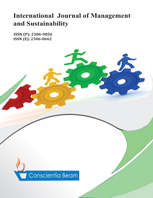Material Pinch Location and Critical Materials Recycling
DOI:
https://doi.org/10.18488/journal.11.2019.81.10.19Abstract
Supply of some materials and metals in the World is getting increasingly challenging. To deal with this issue, several organizations (e.g. European Commission) have composed a list of materials critical for the economy, in the list, 27 critical materials (CMs) are included. Furthermore, several actions have been proposed to tackle the problem, including recycling of CM from secondary sources. Global supply chains of raw CMs often rely on limited number of suppliers (e.g., China, Russia, Brazil, US). Since some countries have monopoly and regulate the supply of CMs, they can have big impact on the prices of CM. Therefore, the objective of this paper is to explore the possibility of scrap recycling, which can be used to meet some of the demand. To evaluate the amount of scarp that can be used for recycling, we propose a graphical optimization technique (pinch analysis). To show the applicability of pinch analysis and the amount of scrap that can be recycled, two examples are presented.

